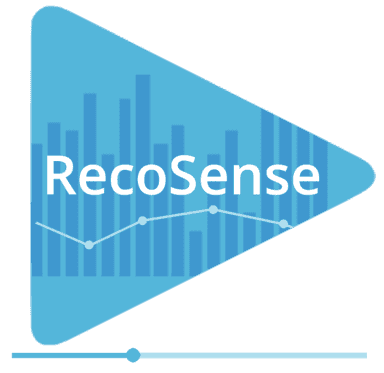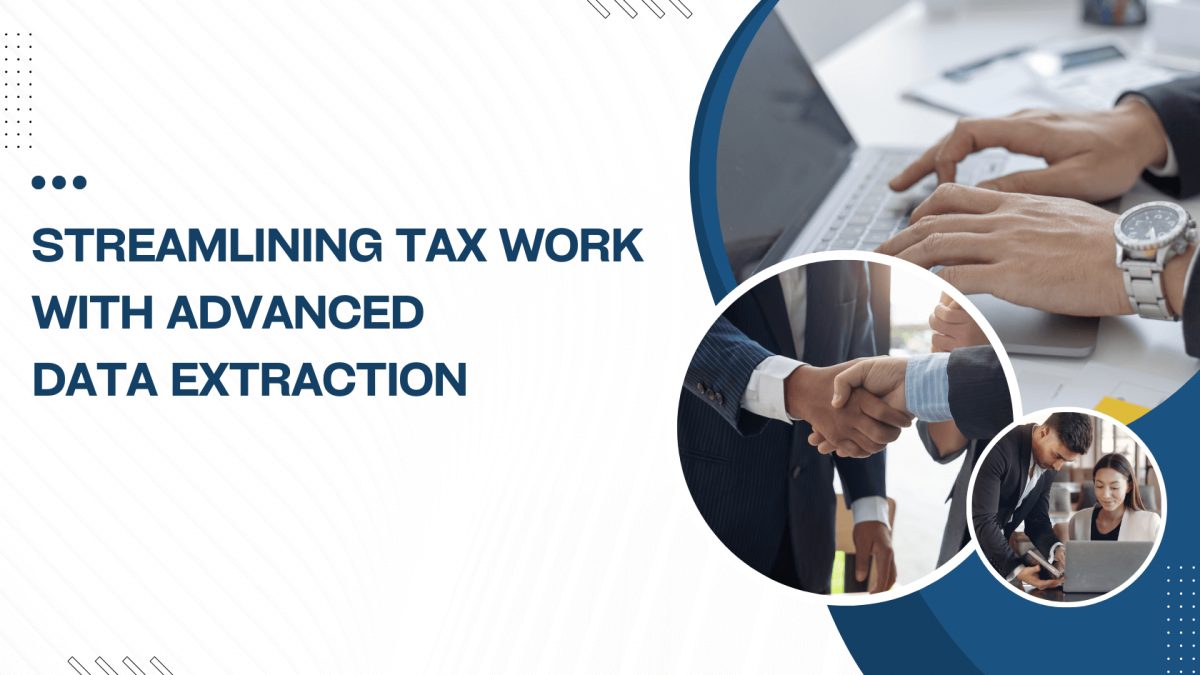Tax season can often feel like a race against the clock, with piles of paperwork and endless forms to navigate. Managing tax documents can be a nightmare for businesses and tax professionals. Whether you're dealing with income statements, expense records, financial statements, or tax forms, data extraction technology can simplify the process and ensure that you have access to the information you need when you need it.
That’s where advanced data extraction techniques come in; there's a more innovative way to handle tax work and streamline processes for increased efficiency and accuracy.
The Problem with Paperwork
Let's paint a familiar picture: you're surrounded by piles of paper, drowning in receipts, and struggling to meet looming deadlines. Sound stressful? Welcome to the world of tax paperwork.
Here's the deal: handling tax documents the old-fashioned way is like navigating a maze blindfolded. It's time-consuming, error-prone, and about as fun as watching paint dry.
But the real kicker? One tiny mistake could land you in hot water with the tax authorities.
These are some of the common challenges with paperwork:
- Inefficiency: Relying on paper-based systems means wasting precious time sifting through stacks of documents just to gather necessary data.
- Compliance risks: Missed deadlines or inaccuracies in reporting could result in penalties or audits, adding to the already daunting tax preparation process.
- Organizational nightmare: Keeping track of various tax-related paperwork, including forms like 1040s, 1099s, W-2s, income statements, contracts, bank statements, HSAs, invoices, and financial statements, can be overwhelming and hinder streamlined processes.
Not just that, tax professionals, including CPAs, encounter additional complexities:
- Manual data entry: Extracting and inputting data manually increases the likelihood of errors and inefficiencies.
- Record-keeping challenges: Managing historical data becomes difficult, leading to further complications in tax preparation.
- Compliance hurdles: Adhering to ever-changing regulatory standards poses a significant challenge.
With all these hurdles combined, it's evident that traditional methods of tax document management are no longer sustainable. This brings us to our next logical question: is there a better way forward?
Yes. Advanced data extraction techniques offer a lifeline for tax professionals looking to streamline their workload and ditch the paper trail for good.
Data Extraction for Tax Documents
Data extraction may sound technical, but it's a game-changer when handling tax documents.
Think of data extraction as a digital assistant that helps you sift through stacks of paperwork without breaking a sweat. It's like having a super-smart scanner that can read and understand your tax documents, extracting all the essential information quickly.
This is how it works:
- Capture the data: First, your documents are scanned or uploaded into a system.
- Digitize the information: Next, advanced technology kicks in. Optical Character Recognition (OCR) and clever algorithms go to work, identifying key data points like numbers, dates, and names.
- Convert to usable data: Once the information is identified, it's converted into a structured format that's easy to work with. No more messy handwriting or illegible receipts—everything is neatly organized and ready to go.
Types of Documents
Tax documents come in various shapes and sizes, each playing a crucial role in the intricate tapestry of tax compliance. Here's a list of the papers you'll likely encounter during tax season:
1. Income Statements
These documents, such as W-2 forms and 1099-MISC forms, provide a snapshot of an individual's or business's earnings over a specific period. They serve as the foundation for calculating taxable income and determining tax liabilities.
2. Expense Records
From crumpled receipts tucked into wallets to meticulously organized expense reports, these documents detail the various expenditures incurred by individuals and businesses. They encompass everything from office supplies and travel expenses to equipment purchases and client entertainment costs.
3. Financial Statements
Balance sheets, profit and loss statements, and cash flow statements offer a panoramic view of an entity's financial health. These documents provide insights into revenue generation, expenditure management, and overall financial performance, serving as invaluable tax planning and decision-making resources.
4. Tax Forms
No tax season is complete without a plethora of tax forms courtesy of the Internal Revenue Service (IRS) and state tax authorities. From the ubiquitous Form 1040 to the industry-specific Form 941, these forms capture essential information related to income, deductions, credits, and taxes owed. Navigating the maze of tax forms requires careful attention to detail and a keen understanding of applicable tax laws and regulations.
Manual Tax Process vs. Tax Compliance Automation
When managing tax processes, there's a clear distinction between the traditional manual approach and modern automation solutions. Let's break down the key differences in a side-by-side comparison:
| Aspect | Manual Process | Tax Compliance Automation |
| Binder Preparation | You might spend hours manually organizing stacks of documents, arranging them in binders, and ensuring everything is in order. It's a time-consuming process that leaves room for errors and can be tedious. | With tax compliance automation, the need for manual binder preparation is eliminated. Advanced software tools can automatically sort and index digital documents, making accessing and managing information more easily. |
| Reporting | Generating reports manually involves inputting data into spreadsheets or forms, which can be prone to errors and inconsistencies. It's a labor-intensive process that requires careful attention to detail. | Automation streamlines the reporting process by automatically generating reports and summaries based on the extracted data. This not only saves time but also ensures accuracy and consistency in reporting. |
| Extraction of Data Points | Extracting data manually from physical and digital sources requires sifting through documents and entering information into databases or spreadsheets. It's a manual and time-consuming task that is susceptible to human error. | Tax compliance automation leverages advanced technologies like OCR and machine learning to extract document data points automatically. This improves accuracy and efficiency in data extraction, saving valuable time and resources. |
| Conversational Query | When searching for specific information, you rely on manual methods like scanning documents or databases, which can be time-consuming and inefficient. | With automation, you can use natural language processing to query information easily. This allows quicker access to relevant data and near-instantaneous response times, enhancing decision-making and productivity. |
In short, while manual tax processes involve labor-intensive tasks prone to errors, tax automation software offers a more efficient and accurate solution. By embracing automation, businesses can streamline their tax workflows, reduce manual effort, and ensure compliance with regulatory requirements.
IRS Operation Hours: How to Reach the IRS and What to Do When You Can't
When dealing with taxes, sometimes you need to contact the experts. That's where the Internal Revenue Service (IRS) comes in. Knowing how and when to contact them can be a game-changer when facing tax-related questions or issues.
The IRS is typically open Monday through Friday, from 8:00 AM to 5:00 PM local time. Keep in mind that hours may vary depending on your location. But don't worry if you can't make it during office hours – the IRS website is available 24/7, offering many resources and tools to help you.
Getting in touch with the IRS is pretty straightforward. You can call them for personal tax matters or business-related issues. Plus, their website,www.irs.gov, is a goldmine of FAQs, forms, and interactive tools.
If you're having trouble reaching the IRS through the usual channels, don't panic. Start by checking out their website – you might find the answers right there. And if all else fails, don't hesitate to seek help from a qualified tax professional. I’ll cover more on this in my next blog.
Parting Words
By now, it should be clear to you that with advanced data extraction techniques, tax season is no longer a headache. All you need to do is ditch manual processes and embrace automation. Automatically, you can streamline your tax workflow, save time, and ensure accuracy and compliance.
From OCR technology to streamlined reporting and effortless advanced data extraction, Qsense offers a more innovative solution for handling tax documents. Don't let paperwork overwhelm you—try Qsense today to make tax season a breeze.

